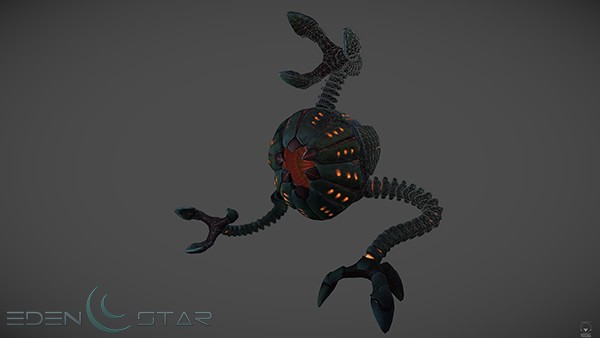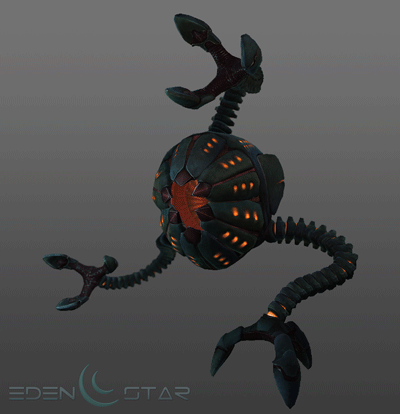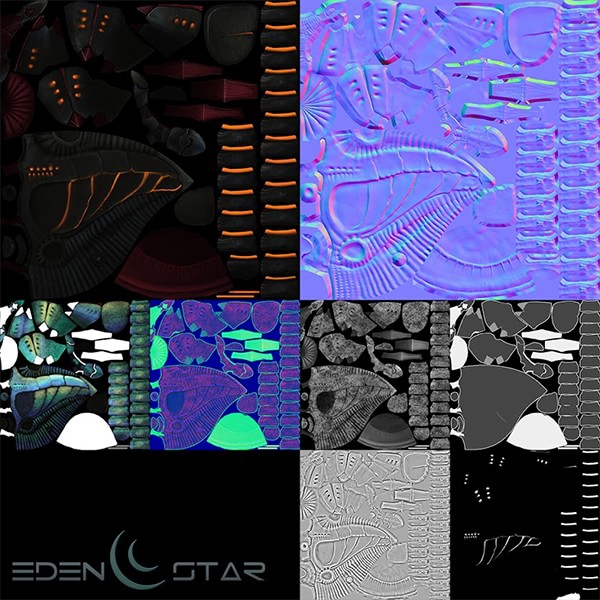Hello everyone!
For this post we wanted to showcase some more Eden Star art assets, but this time focusing a bit more on the technical side of what makes up an in game character model. We also want to give you a first look at one of the early types of enemy you, the Pioneer, will face on the surface of Pharus 7.
This creature is drawn to the Teslinium contained within the Eden Kit, and in the MATA-Tool on your arm. They absorb matter to survive, and do not discriminate between inert minerals and your face.

Nearly all models in current 3D games have two main versions, a high resolution source model and the low resolution game model. The high resolution model is used to get the right visual aesthetic and details (these can often be 10’s of millions of polygons). Whereas the low resolution model is a much lower polygon count that the games engine can handle, in the case of this model we used, at its high level of detail, sixteen thousand triangles on the engine model.

In order to capture the look of these million polygon models in game, we make use of textures called normal maps. These maps are baked from our sculpted model to the editor-friendly model, and create an optical illusion that the model has more detail than it really does.

This texture works in conjunction with a series of other maps which are assembled within a shader inside the game engine. These textures include a diffuse map; which is where all the colour information is stored, and a specular map which is responsible for how shiny or matte a surface is. There are a number of other functions shaders can use textures for to create a variety of different material properties, these can be anything from emissives to make the material glow, to masks that make the material opaque or translucent.
I hope you’ve all enjoyed this brief insight into how we structure our characters, keep watching this space for more on Eden Star in the coming weeks.